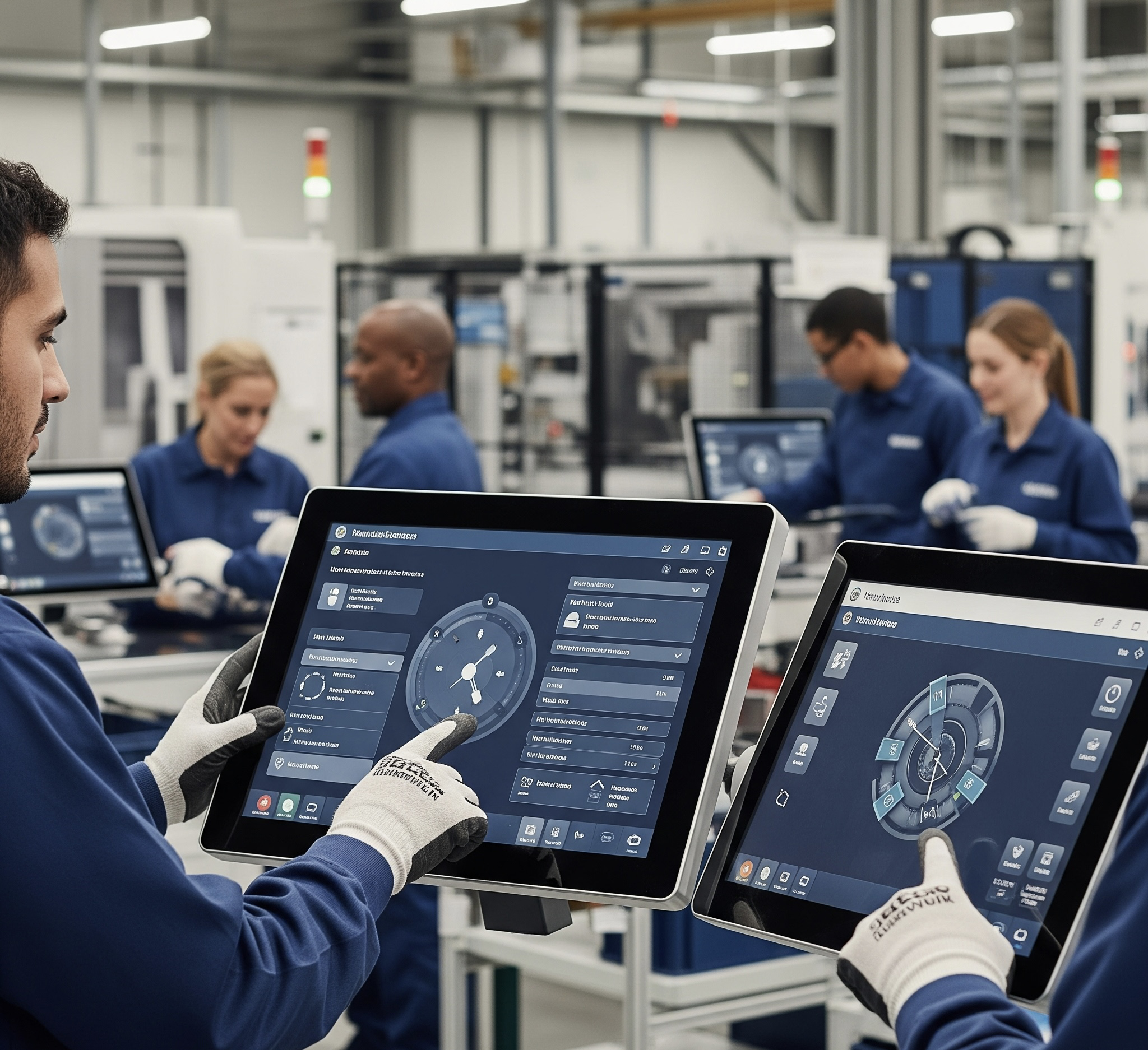
UI/UX Design in Manufacturing
The Role of UI/UX Design in Manufacturing
By: Destiny Dickerson
In today’s manufacturing industry, user interface (UI) and user experience (UX) design are no longer limited to software and consumer tech products. They have become integral to the efficiency, safety, and productivity of manufacturing systems. As manufacturing becomes more digitized—with smart factories, industrial automation, and real-time data integration—the need for intuitive, accessible, and functional design is growing rapidly.
For decades, industrial software and control systems were built primarily with engineers in mind. As a result, many legacy systems are complex, visually cluttered, and difficult to navigate. Today, manufacturers recognize that an improved interface and user experience can reduce human error, shorten training times, and improve productivity on the factory floor. UI/UX design has evolved into a strategic tool for better human-machine interaction.
Operational Efficiency and Reduced Downtime
When workers interact with manufacturing systems, such as Human-Machine Interfaces (HMIs), Manufacturing Execution Systems (MES), or Industrial Internet of Things (IIoT) dashboards, a well-designed interface streamlines operations. A clear visual hierarchy, simplified navigation, and real-time feedback enable users to make decisions quickly and accurately. Siemens’ SIMATIC WinCC platform, for example, offers operators a clean and customizable user interface (UI) that improves control over production lines. When systems are intuitive, operators spend less time navigating screens and more time focusing on performance.
Shortened Learning Curves and Lower Error Rates
In environments where workforce turnover or cross-training is common, the learning curve of software tools plays a significant role. A user-friendly interface can reduce the time needed for onboarding and minimize user mistakes. General Electric’s Brilliant Factory concept incorporates digital dashboards with clear workflows and minimal design distractions, allowing teams to monitor and adjust operations without extensive technical knowledge. When systems are built with all levels of users in mind, not just experts, the risk of costly errors is reduced.
Improved Safety and Regulatory Compliance
Poor interface design can lead to miscommunication, missed alarms, or incorrect data input—any of which could compromise safety. In manufacturing environments where hazardous equipment or materials are used, safety depends on rapid and accurate responses. Rockwell Automation’s FactoryTalk system, for instance, emphasizes alert visibility and clear interface cues to guide users through emergency or maintenance protocols. Design choices like strong color contrast, clear alert prioritization, and reduced screen clutter are essential for helping operators react swiftly in high-pressure situations.
Enhanced Data Interpretation and Decision-Making
As factories become increasingly data-driven, the ability to visualize and interpret information quickly is vital. UI/UX design plays a central role in how data is communicated. Dashboards that are overloaded with metrics or that require too many steps to access relevant information become counterproductive. Honeywell’s Forge industrial platform demonstrates how effective UX can empower users to act on insights by organizing KPIs, alerts, and diagnostics into a well-structured layout. When information is easy to digest, decision-makers can focus on outcomes instead of searching for data.
Human-Machine Collaboration
As AI and robotics become increasingly integrated into manufacturing processes, UI/UX design plays a crucial role in facilitating effective human-machine collaboration. Collaborative robots, or “cobots,” rely on user-friendly programming interfaces that enable workers to set tasks without requiring advanced coding skills. ABB’s RobotStudio, for example, allows users to simulate and test robotic movements in a virtual 3D environment. With a well-designed interface, even non-technical staff can fine-tune robotic workflows, making automation more accessible and efficient.
Designing for the Shop Floor
Manufacturing environments present unique challenges for interface design. Screens may be used in dusty, noisy, or low-light conditions. Workers may wear gloves or operate machinery in fast-paced situations. These factors demand interfaces that are not only intuitive but also physically practical. This includes large touch targets, simplified navigation, minimal reliance on text, and visual cues that can be understood quickly. Designers must account for real-world use cases rather than ideal office conditions.
The Rise of Immersive UX: AR and Voice Interfaces
Manufacturers are also exploring new forms of user experience beyond screens. Augmented reality (AR) and voice-enabled controls are transforming the way technicians interact with machines. Platforms like PTC’s Vuforia Studio allow AR instructions to be overlaid directly onto equipment, eliminating the need to reference paper manuals or search through digital menus. These immersive experiences enhance accuracy, minimize downtime, and reduce cognitive load by guiding users through complex tasks in a step-by-step manner.
Conclusion
UI/UX design in manufacturing is not just about making interfaces look nice—it’s about optimizing how humans interact with complex systems. Whether improving the speed of a task, enhancing safety, or supporting better decision-making, thoughtful interface design has a direct impact on manufacturing outcomes. As the industry continues to adopt innovative technologies and automation, UI/UX design will only become more critical. Manufacturers that invest in better design today will be better positioned for efficiency, adaptability, and long-term success.
Sources
- Siemens – SIMATIC WinCC: https://new.siemens.com/global/en/products/automation/topic-areas/industrial-communication/hmi.html
- GE Digital – Brilliant Manufacturing: https://www.ge.com/digital
- Rockwell Automation – FactoryTalk: https://www.rockwellautomation.com
- Honeywell Forge: https://www.honeywell.com
- ABB – RobotStudio: https://new.abb.com/products/robotics/robotstudio
- PTC – Vuforia Studio: https://www.ptc.com/en/products/augmented-reality/vuforia-studio